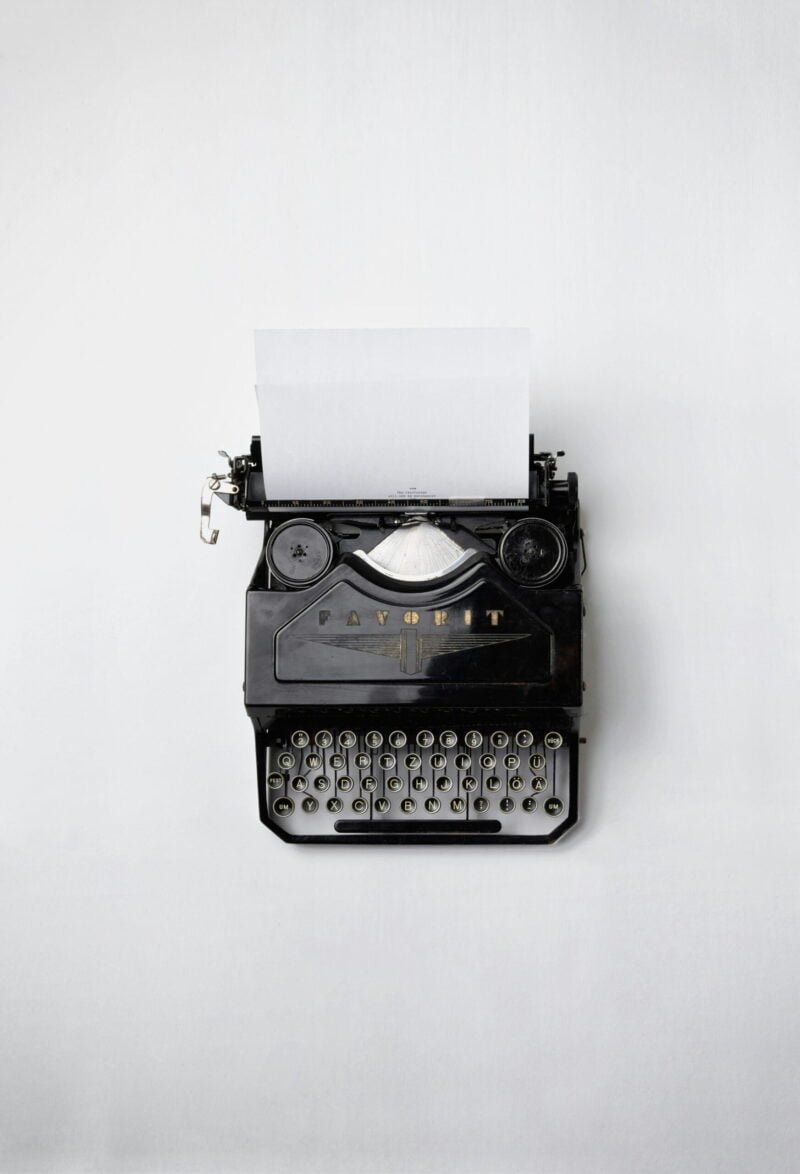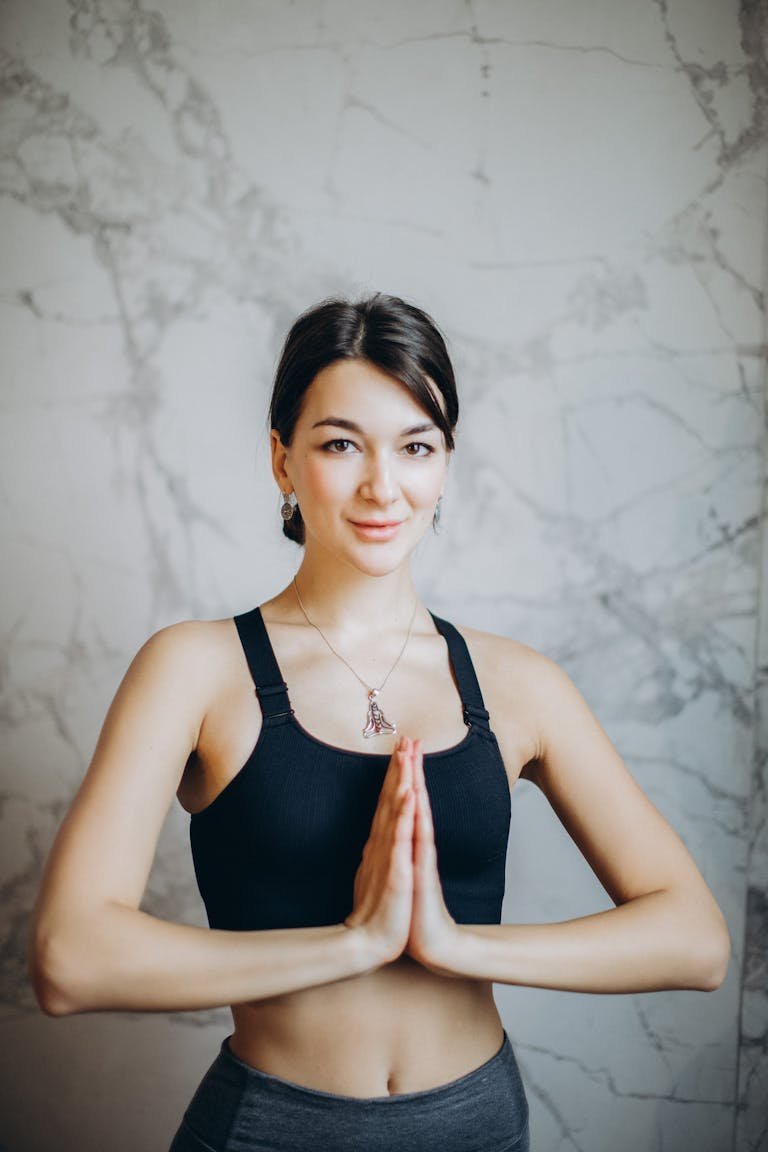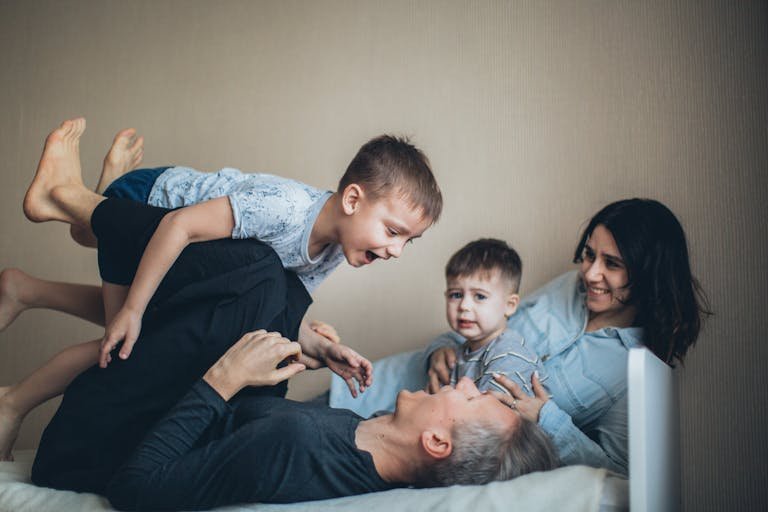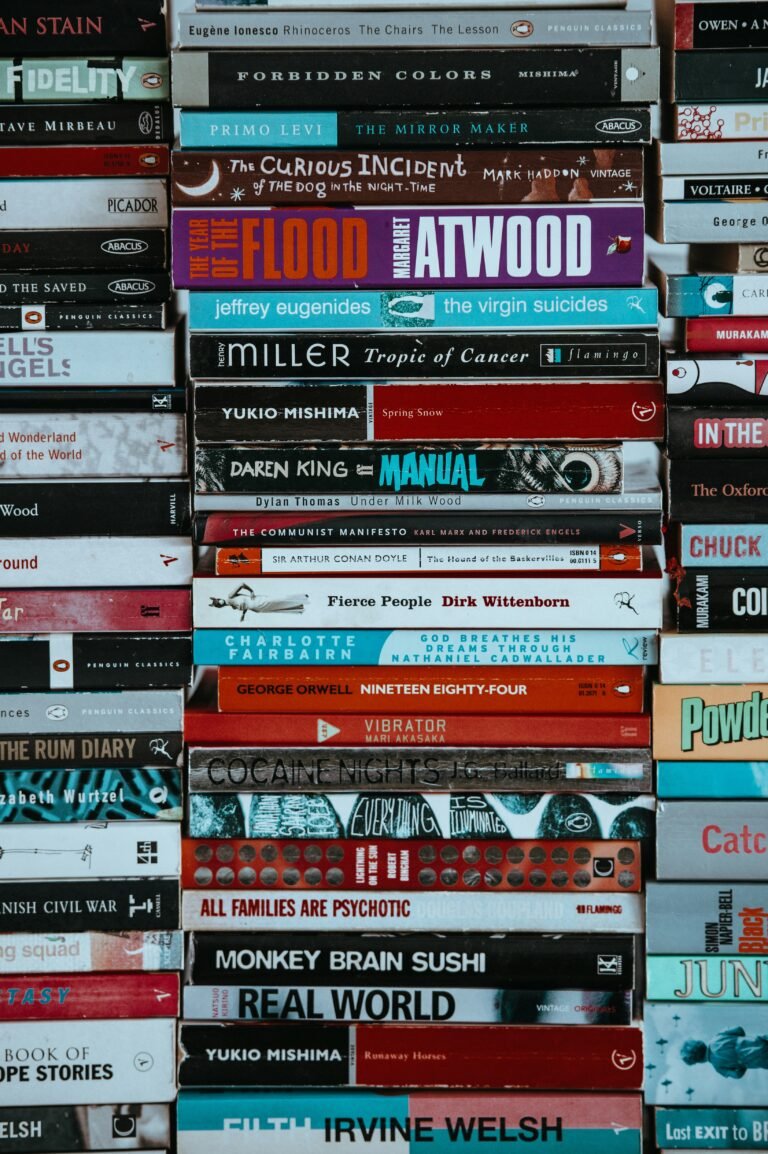Top 9 Books on Minimalism: A Simpler and Happier Life
Minimalism is a lifestyle choice that encourages us to focus on what truly matters, shedding the excess that often clutters both our physical spaces and our minds. These books on minimalism inspire us to embrace this philosophy and open ourselves up to the possibility of leading a simpler, more meaningful life.
If you’re new to minimalism, check our beginner’s guide here.
For many of us, a book can serve as a powerful gateway to understanding. They offer not only theoretical insights but also practical, actionable advice on how to implement minimalist principles into all aspects of our lives. From our homes, to our schedules, and even our digital presence, these books provide a roadmap to a more intentional existence.
We’ve carefully curated a list of the top 9 books on minimalism that will help guide you on this transformative journey. Each of these works has been specifically selected for its unique perspective, practical wisdom, and potential to inspire real change. Whether you’re a seasoned minimalist looking to deepen your practice or a curious newcomer taking your first steps toward a simpler life, these books on minimalism offer valuable insights for everyone.
So, let’s find a comfy spot and take a first, or indeed another step towards a more intentional and fulfilling life.
1. ‘Goodbye, Things’ by Fumio Sasaki
I had already heard of Minimalism when I stumbled across Fumio Sasaki’s ‘Goodbye, Things’ in Waterstones. I had been listening to The Minimalists podcast the year before but had yet to dive fully into this lifestyle. This is a quintessential read for anyone interested in embracing minimalism. What makes this book on minimalism particularly compelling is Sasaki’s personal journey. Sasaki was once an avid collector of possessions, having the things he felt he should have to present himself to the world. Sasaki shares his transformation into a minimalist lifestyle with refreshing honesty and clarity.
A Relatable Journey
Sasaki’s story resonates with many readers just like me because he wasn’t a natural minimalist. He struggled with the chaos of excess, much like many of us do. His decision to pare down his belongings led to profound psychological benefits, illustrating how letting go of material clutter can lead to a more enriched, serene life. He
Practical Steps to Minimalism
One of the book’s core strengths is its actionable approach to reducing possessions. Sasaki doesn’t just preach minimalism; he provides clear methods to achieve it. Readers will find a wealth of advice and practical tips, including:
- Why Minimalism?
- An honest look at why we accumulate so many thingsHow to categorise items effectively
- Techniques for questioning your world view and the necessity of each possession, helping you to say ‘Goodbye’ to your ‘things’.
- Strategies for gradual decluttering to make the process less overwhelming
Real-Life Transformations
‘Goodbye, Things’ comes with real-life examples of transformation. Sasaki showcases various individuals who have adopted minimalism, highlighting their unique journeys and the diverse benefits they’ve experienced. These stories serve as both inspiration and proof of the minimalist philosophy’s efficacy.
Why It’s Great for Beginners
For those new to minimalism, this book is particularly motivational. Sasaki’s honest recounting of his struggles and triumphs provides a reassuring guide through the decluttering journey. It’s not just a manual for reducing possessions but a testament to the profound impact that minimalism can have on one’s life. Ask yourself – Is there happiness in having less?
2. ‘Minimalism: Live a Meaningful Life’ by The Minimalists
Joshua Fields Millburn and Ryan Nicodemus, known collectively as The Minimalists, offer a deep dive into the philosophical and emotional aspects of minimalism in their seminal work, ‘Minimalism: Live a Meaningful Life’. These are the guys that introduced the concept to me and this book on minimalism stands out not just for its practical advice, but also for its introspective approach, aimed at those seeking to understand the core reasons behind adopting a minimalist lifestyle.
The Five Values
The book opens with the question “Are you truly happy?” At the heart of the book are then what The Minimalists call the five values: health, relationships, passions, growth, and contribution. They argue that by focusing on these elements, we can create a foundation for a more meaningful and content existence. Josh and Ryan provide an in-depth exploration of each value, offering insights on how to prioritise them in daily life.
Practical Minimalism
While the book is rich in philosophy, it doesn’t skimp on practical advice. Josh and Ryan provide actionable strategies for simplifying various aspects of life, including:
- Decluttering physical spaces
- Simplifying schedules and commitments
- Cultivating meaningful relationships
- Pursuing passions with intention
Their recommendations are grounded in their own experiences. They’ve lived it and this makes making them highly relatable and easy to implement.
Personal Narratives
One of the most compelling aspects of ‘Minimalism: Live a Meaningful Life’ is the personal stories woven throughout the text. Josh and Ryan offer candid glimpses into their journey towards minimalism, including:
- Their struggles with corporate careers and consumerism
- The personal events that led them to embrace minimalism
- The transformative impact of their lifestyle change
These narratives serve as powerful testimonies, illustrating the profound effect that embracing a minimalist lifestyle can have.
Beyond Material Minimalism
What sets this book apart is its focus on minimalism as a tool for overall life improvement, not just decluttering. Josh and Ryan encourage you to apply minimalist principles to your mental and emotional lives, advocating for:
- Letting go of limiting beliefs
- Focusing on what truly matters
- Creating space for personal growth and fulfillment
3. ‘The Life-Changing Magic of Tidying Up’ by Marie Kondo
Marie Kondo’s ‘The Life-Changing Magic of Tidying Up’ has become a cultural phenomenon, introducing millions to the transformative power of decluttering. At the heart of this bestselling book on minimalism is the KonMari Method, a unique approach to organisation that promises not just a tidy home, but a life-altering experience.
The KonMari Method: A New Approach to Tidying
Kondo’s method stands out for its innovative approach to decluttering. Unlike traditional organising methods that tackle clutter room-by-room, the KonMari Method focuses on categories. This ensures a comprehensive declutter of your entire living space. The method follows a specific order:
- Clothes
- Books
- Papers
- Komono (miscellaneous items)
- Sentimental items
This order is deliberately designed to build your decision-making skills as you progress through increasingly emotionally charged categories.
The “Spark Joy” Principle
Central to the KonMari Method is the concept of keeping only items that “spark joy.” This subjective criteria encourages individuals to connect with their belongings on an emotional level, fostering mindfulness and intentionality. The process involves:
- Holding each item individually
- Assessing your emotional response to it
- Keeping only those items that truly “spark joy”
- Thanking and discarding items that no longer serve you
This approach helps shift the focus from “what to get rid of” to “what to keep,” promoting a more positive decluttering experience.
Mindset and Visualisation
Kondo emphasises that decluttering is not merely a physical act but a mental and emotional journey. She encourages readers to:
- Visualise their ideal lifestyle before beginning
- Understand their reasons for wanting to tidy
- Commit fully to the process
This focus on mindset helps individuals confront their attachment to possessions and the underlying reasons for accumulating clutter. Although I had heard of this phenomenal bestseller, I came to Marie Kondo her method after I was already well on my minimalism journey. I would, however say that the step to consider whether an item “sparks joy” really helped when I got to the more challenging sentimental items.
Practical Tidying Techniques
Beyond philosophy, ‘The Life-Changing Magic of Tidying Up’ offers numerous practical tips, including:
- Efficient folding methods to maximize drawer space
- Strategies for organising books and papers
- Techniques for storing miscellaneous items
- Approaches to dealing with sentimental objects
The Emotional Impact of Tidying
Perhaps the most compelling aspect of Kondo’s book is its emphasis on the emotional benefits of decluttering. Many readers report:
- Feelings of relief and lightness
- Increased energy and motivation
- Enhanced decision-making skills in other areas of life
- A newfound appreciation for their possessions
By linking tidying to personal growth and emotional well-being, Kondo elevates the concept of decluttering from a chore to a potentially life-changing experience.
4. ‘Essentialism: The Disciplined Pursuit of Less’ by Greg McKeown
In a world that constantly demands more of our time, energy, and attention, Greg McKeown’s ‘Essentialism: The Disciplined Pursuit of Less’ offers a refreshing counterpoint. This book introduces the philosophy of essentialism, which is not merely about doing less, but about making the wisest possible investment of your time and energy to operate at your highest point of contribution. This is a book on minimalism and intentionality for your brain rather than your things.
The Essentialist Mindset
At its core, essentialism is about discerning the vital few from the trivial many. McKeown argues that by focusing on what is truly essential, we can reclaim control over our choices and live a life of purpose and meaning. Key aspects of the essentialist mindset include:
- Recognising the power of choice
- Discerning between different options
- Making trade-offs deliberately
The Art of Saying No
One of the most valuable skills McKeown teaches is the ability to say no gracefully but firmly. He provides strategies for:
- Separating decisions from relationships
- Setting boundaries with clarity and kindness
- Developing the courage to disappoint others when necessary
By mastering the art of saying no, readers can protect their time and energy for what truly matters.
Systematic Decision-Making
McKeown introduces a systematic approach to decision-making that involves three key steps:
- Explore: Evaluate a broad set of options
- Eliminate: Cut out the nonessential
- Execute: Remove obstacles and make execution effortless
This framework helps readers make more intentional choices in both their personal and professional lives.
Practical Applications
‘Essentialism’ is not just theoretical; it offers practical advice for applying essentialist principles in various aspects of life, including:
- Designing routines that support essential priorities
- Creating buffer time to reduce stress and increase creativity
- Editing life to remove unnecessary commitments and possessions
The Importance of Sleep and Play
Interestingly, McKeown emphasises the essential nature of both sleep and play. He argues that:
- Adequate sleep is crucial for high performance and decision-making
- Playfulness and exploration are vital for creativity and innovation
This holistic approach to essentialism acknowledges that true productivity comes from a well-rounded, balanced life.
5. ‘Digital Minimalism’ by Cal Newport
In an era dominated by smartphones, social media, and constant connectivity, Cal Newport’s ‘Digital Minimalism’ offers a timely and crucial perspective on our relationship with technology. This book on minimalism delves into the profound influence of digital tools on modern life and presents a compelling argument for a more intentional approach to technology use.
Understanding Digital Minimalism
Newport introduces the concept of digital minimalism, which he defines as a philosophy of technology use in which you focus your online time on a small number of carefully selected and optimised activities. Key principles include:
- Using technology to support your deeply held values
- Optimising your digital tools to best serve these values
- Being comfortable missing out on the non-essential
The Digital Declutter Process
At the heart of Newport’s approach is a 30-day digital declutter process. This involves:
- Taking a break from optional technologies
- Exploring and rediscovering offline activities
- Reintroducing technology selectively and intentionally
This process allows individuals to reset their digital lives and gain clarity on which digital tools truly add value.
Cultivating High-Quality Leisure
Newport emphasises the importance of developing meaningful offline activities to replace mindless scrolling. He suggests:
- Prioritising demanding leisure activities that require skill and engagement
- Reclaiming conversation and face-to-face interactions
- Embracing solitude and its benefits for clarity and creativity
Strategies for Digital Minimalism
The book offers practical strategies for implementing digital minimalism, including:
- Turning devices into single-purpose tools
- Embracing slow media consumption
- Joining the attention resistance (techniques to avoid the pull of addictive tech)
The Role of Social Media
Newport takes a critical look at social media, questioning its necessity in our lives. He suggests:
- Evaluating the true value social media provides
- Considering alternative ways to stay connected
- Implementing strict protocols for social media use if you choose to keep it
Real-Life Success Stories
Throughout ‘Digital Minimalism,’ Newport shares inspiring stories of individuals who have successfully implemented these principles, showcasing the transformative impact of reclaiming control over digital devices.
6. ‘The More of Less’ by Joshua Becker
Joshua Becker’s ‘The More of Less’ presents a compelling case for minimalism as a pathway to a more fulfilling and liberated life. As a well-known advocate for the minimalist lifestyle, Becker offers insights that are both practical and inspirational, making this book an excellent resource for those looking to simplify their lives.
The Philosophy of Owning Less
Becker introduces readers to the core philosophy of minimalism: the idea that by owning less, we can create space for more of what truly matters. He explores:
- The freedom that comes from reducing material possessions
- How minimalism can lead to a greater focus on experiences and relationships
- The connection between minimalism and personal values
Minimalism for Families
One of the standout aspects of Becker’s work is his focus on how minimalism can benefit families. He discusses:
- Strategies for introducing minimalist concepts to children
- How a simplified home environment can lead to a more harmonious family life
- Ways to create shared family experiences that don’t revolve around possessions
Practical Decluttering Strategies
‘The More of Less’ provides a wealth of practical tips for decluttering homes. Becker’s strategies include:
- Starting with easier areas to build momentum
- Using the “90/90 rule” for evaluating possessions. This asks the questions “Have you used this in the past 90 days? Will you use it in the next 90 days?”
- Creating a system for ongoing decluttering
Addressing Common Concerns
Becker thoughtfully addresses common hesitations about embracing minimalism, such as:
- Fears about letting go of sentimental items
- Concerns about potential future needs
- The challenge of living minimally in a consumer-driven society
Minimalism Beyond Possessions
While much of the book focuses on physical decluttering, Becker also explores how minimalist principles can be applied to other areas of life, including:
- Simplifying schedules and commitments
- Minimising digital clutter
- Streamlining finances
Inspiring Personal Stories
Throughout the book, Becker weaves in inspiring stories of individuals and families who have embraced minimalism. These narratives serve as powerful testimonials to the positive impact of owning less, from increased financial security to enhanced mental well-being.
7. ‘Soulful Simplicity’ by Courtney Carver
Courtney Carver’s “Soulful Simplicity” offers a unique perspective on minimalism, focusing on its emotional and spiritual benefits. This book goes beyond the physical aspects of decluttering, delving into how simplifying our lives can lead to profound personal transformation.
The Journey to Simplicity
Carver shares her personal journey towards simplicity, which was sparked by a health crisis. She discusses:
- How stress and busyness contributed to her illness
- The process of reevaluating her priorities
- How simplifying her life led to improved health and happiness
Emotional Decluttering
A significant portion of “Soulful Simplicity” is dedicated to emotional decluttering. Carver explores:
- Identifying and letting go of emotional baggage
- Cultivating self-compassion and self-care
- Simplifying relationships and setting healthy boundaries
Mindfulness and Presence
Carver emphasises the importance of mindfulness in achieving true simplicity. She offers guidance on:
- Practicing presence in daily life
- Using mindfulness to make intentional choices
- Connecting more deeply with oneself and others
Simplifying Work and Finances
The book provides practical advice for simplifying work and financial life, including:
- Strategies for creating a more meaningful career
- Tips for reducing financial stress
- Ideas for aligning work with personal values
Creating Space for What Matters
Carver discusses how simplifying creates space for what truly matters in life. She explores:
- Identifying core values and priorities
- Making time for passion projects and personal growth
- Cultivating meaningful relationships and experiences
Practical Simplicity Tips
Throughout “Soulful Simplicity,” Carver offers practical tips for incorporating simplicity into daily life, such as:
- Creating morning and evening routines for peace and clarity
- Simplifying meal planning and preparation
- Curating a minimalist wardrobe
The Ripple Effect of Simplicity
Carver beautifully illustrates how embracing simplicity can have a positive ripple effect on various aspects of life, including:
- Improved physical and mental health
- Enhanced creativity and productivity
- Deeper connections with others and the environment
8. ‘The Joy of Less’ by Francine Jay
Francine Jay’s ‘The Joy of Less’ stands out as a comprehensive guide to minimalist living. Jay, also known as “Miss Minimalist”, provides readers with a systematic approach to decluttering and maintaining a minimalist lifestyle.
The STREAMLINE Method
At the core of Jay’s approach is her signature STREAMLINE method, an acronym that outlines a step-by-step process for decluttering:
- Start over
- Trash, treasure, or transfer
- Reason for each item
- Everything in its place
- All surfaces clear
- Modules
- Limits
- If one comes in, one goes out
- Narrow it down
- Everyday maintenance
Room-by-Room Decluttering
Jay provides detailed guidance for decluttering each area of the home, including:
- Living spaces
- Bedrooms
- Kitchen and dining areas
- Bathrooms
- Home office
- Storage areas
For each space, she offers specific strategies and considerations to make the decluttering process more effective and less overwhelming.
Minimalist Philosophy
Beyond practical tips, ‘The Joy of Less’ delves into the philosophy behind minimalism. Jay explores:
- The freedom that comes from owning less
- How minimalism can lead to a more fulfilling life
- The environmental benefits of reduced consumption
Overcoming Emotional Attachments
Jay addresses the emotional challenges of decluttering, offering advice on:
- Letting go of sentimental items
- Dealing with gifts and inherited possessions
- Overcoming the “just in case” mentality
Maintaining a Minimalist Lifestyle
This book on minimalism doesn’t stop at decluttering; it also provides strategies for maintaining a minimalist lifestyle long-term, including:
- Developing mindful shopping habits
- Creating systems to prevent clutter accumulation
- Regular reassessment of possessions
9. ‘Minimal’ by Madeleine Olivia
Madeleine Olivia’s ‘Minimal’ offers a fresh perspective on minimalism by intertwining it with sustainable living. This book serves as a comprehensive guide for those seeking to simplify their lives while also reducing their environmental impact.
The Minimalism-Sustainability Connection
Madeleine emphasises the intrinsic link between minimalism and sustainability. She explores:
- How reducing consumption naturally leads to a more eco-friendly lifestyle
- The environmental impact of overconsumption
- Ways in which minimalism can contribute to conservation efforts
Sustainable Minimalism in Practice
The book on minimalism provides actionable advice for incorporating sustainable minimalism into various aspects of life, including:
- Creating a minimalist, eco-friendly wardrobe
- Adopting zero-waste practices in the kitchen
- Implementing energy-saving habits at home
- Choosing sustainable transportation options
Mindful Consumption
Madeleine offers guidance on developing more mindful consumption habits, such as:
- Evaluating needs versus wants
- Researching the environmental impact of products before purchasing
- Supporting ethical and sustainable brands
Digital Minimalism and Sustainability
An interesting aspect of ‘Minimal’ is its exploration of digital minimalism from a sustainability perspective. Madeleine discusses:
- The environmental impact of digital clutter
- Strategies for reducing digital waste
- How to use technology more mindfully and sustainably
Mental Health and Well-being
Madeleine doesn’t neglect the mental health aspects of minimalism and sustainability. She explores:
- How simplifying can reduce stress and anxiety
- The connection between sustainable living and improved well-being
- Mindfulness practices for a more intentional life
Community and Global Impact
‘Minimal’ also emphasises the broader impact of individual choices. Olivia discusses:
- Building communities around sustainable minimalism
- The global impact of collective minimalist and sustainable practices
- How to inspire others to adopt a more minimal and sustainable lifestyle
Conclusion: Embarking on Your Minimalist Journey
As we’ve explored these nine remarkable books on minimalism, it’s clear that this lifestyle choice offers far more than just a tidy home. Minimalism, in its various forms, provides a pathway to a more intentional, fulfilling, and sustainable life.
Each book we’ve discussed offers a unique perspective on minimalism:
- Fumio Sasaki’s ‘Goodbye, Things’ provides a relatable journey for beginners.
- ‘Minimalism: Live a Meaningful Life’ by The Minimalists delves into the philosophy behind the lifestyle.
- Marie Kondo’s ‘The Life-Changing Magic of Tidying Up’ offers a systematic approach to decluttering.
- Greg McKeown’s ‘Essentialism’ applies minimalist principles to decision-making and productivity.
- Cal Newport’s ‘Digital Minimalism’ addresses our relationship with technology.
- Joshua Becker’s ‘The More of Less’ focuses on the benefits of minimalism for families.
- Courtney Carver’s ‘Soulful Simplicity’ explores the emotional and spiritual aspects of simplifying.
- Francine Jay’s ‘The Joy of Less’ provides a comprehensive guide to minimalist living.
- Madeleine Olivia’s ‘Minimal’ intertwines minimalism with sustainable living.
As you embark on your minimalist journey, remember that there’s no one-size-fits-all approach. The beauty of minimalism lies in its flexibility – you can adapt its principles to suit your unique circumstances and goals.
Whether you’re looking to declutter your physical space, simplify your schedule, reduce your environmental impact, or find more meaning in life, these books on minimalism offer valuable insights and practical strategies to guide you.
Get started
Start with the book that resonates most with your current situation and goals. As you progress on your journey, you may find yourself drawn to different aspects of minimalism, and these diverse resources will be there to support you.
Remember, minimalism is not about deprivation; it’s about making room for what truly matters in your life. It’s a journey of self-discovery, intentionality, and freedom. As you simplify your life, you will likely find yourself with more time, energy, and resources to pursue your passions, nurture relationships, and contribute to causes you care about.
So, take that first step. Choose a book on minimalism, start reading, and begin your journey towards a simpler, more intentional life. The path of minimalism may not always be easy, but the rewards – a clearer mind, a lighter heart, and a more fulfilling life – are well worth the effort.
Happy reading, and may your minimalist journey bring you the joy, freedom, and purpose you seek!







